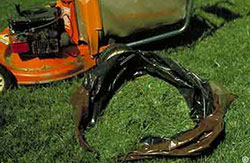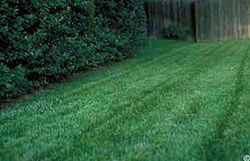
Allowing clippings to remain on lawns is recommended for many reasons including eliminating fuel consumption for hauling, not filling landfills, encouraging microbiological activity to promote healthier grass, and recycling nitrogen back into the lawn.
For new lawns, that have low organic matter, clippings provide nitrogen but are not a “tipping” factor in the fertilization equation. Lawn soil organic matter levels peak at 30 to 40 years of age and this organic matter supplies one to two pounds of plant available nitrogen per year.

If the fertilization schedule continues at the same rate used in the first 30 years in the life of the lawn, it could be detrimental. Applying 4 pounds of fertilizer per season in addition to that supplied by soil organic matter and recycled clippings means the lawn could be receiving 5 to 6 pounds of nitrogen yearly. This would result in an overly lush lawn that requires higher amounts of water, is more subject to disease and is less tolerant of heat and drought.
When lawns reach 30 years of age and if clippings continue to be returned to the lawn, nitrogen application rates should be reduced to 2 pounds (two applications per year). This assumes the lawn is mowed at the recommended height and irrigated reasonably. This should produce a lawn of acceptable quality to most people and one that is easier to manage under Colorado’s environmental conditions.



